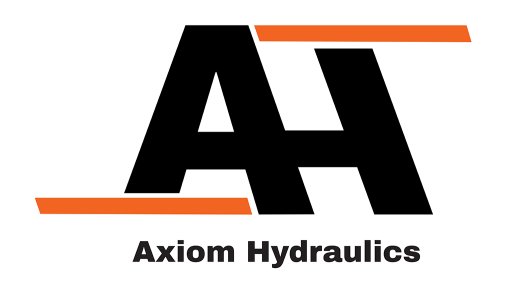Enviro externalities and how to deal with them
All environmental externalities emanate from the economy and they also reflect the evolution and moment at which societal values are. In reality, as people’s income and levels of education grow, so too do their preferences for better environmental standards and quality.
The question then remains regarding how much of these externality pressures and damages we are prepared to tolerate and how we design an economic policy regime that takes into account imme- diate impacts and future impacts without eroding the sustainability and income growth of a nation collectively. Indus- trialised economies are not a free lunch. They have benefits as well as side effects. Eventually, the side effects have a regressive influence on the economy and its performance. Delays in dealing with these externalities can be more costly than not dealing with these problems progressively, as we are never certain about the stability of future growth and sources of income for public coffers.
The burden of externality costs will have to be shared between the State, private enterprises and citizens as the share of income grows with the growth of the economy. It must be argued here that an economic policy that allows for income growth and a reduction in inequality and has a fair distribution mechanism should be able to afford higher environmental standards and should factor this in as a central feature of planning.
There are both material and nonmaterial benefits with a better economic policy design that is inclusive of environmental externalities. There is a need for such a far-sighted and enlightened policy regime. It is important not to forget that three critical endowments will be important sources of jobs and economic growth in the future: mining, agriculture and nature-based tourism. Unresolved externalities can undermine future prospects and robust growth in these sectors.
We cannot afford to squander or damage the potential of these endowments and we ought to invest in their protection and nurturing, as they will help sustain a diversified economic base in the future. In some cases, they continue to be the backbone of many resource-dependent economies. Further, often when other high-paying sectors fail to sustain jobs and growth, the traditional natural resource sectors provide both a fall-back and a social security safety net, even if there is a degradation of income and livelihoods.
The distribution and income growth model has to be right. Failure to get this right means we extenuate not only the environmental problem but also the economic one. The two issues are tied, as income distribution and growth in savings will assist in dealing with externality challenges. Perhaps the idea is to treat nature not only as an input in production, something to be consumed, but also as a source of future saving through its renewal and proper management.
There will be a challenge when dealing with a trade-off between better income for labour versus environmental interests that we have to consider as an on-going tension in public and economic policy- making. The preference for higher income above dealing with the environmental externality will be a contentious one as it has the risk of being forgotten or trans- ferred to future generations having to be eventually socialised through public taxes as there is no way of going back and recovering the costs associated with a negative environmental legacy. In effect, the consequence is that any lack of redress of this negative legacy would be eating either at the endowment of future generations or their income.
Dealing with the externalities should be matched by an economic policy model that is able to dip into both private and public savings to deal with our externality problems in such a manner that they lead to optimal social welfare and economic outcomes. This may well be a matter of staging when deciding the best timing to plug the externality hole rather than one of avoidance. Some of these can be absorbed through private incomes – as the per capita income of the country grows others will require new investment pathways for technologies that have strong sustainability features. These technologies may well cost more or will have to be developed within the local economy, requiring us to dip into our own savings with the promise that their evolution and adoption will create better social welfare and advance economic progress.
In most cases, dealing with environ- mental externalities is treated as a competi- tiveness issue. In this thinking, it is seen as a cost. For instance, Chinese reforms in the 1980s towards greater industrialisation and manufacturing had a delibe- rate preference to improve job creation and income prospects. Environmental externalities were not factored in as a cost to production.
China now sits with a significant envi- ronmental externality. Fortunately, its economic growth and rise in income has enabled it to invest in new assets – it has developed strong human capability and has large savings that it can dip into to solve some of these problems. But China is doing other things too – it is increasing its environmental footprint in other countries. Agricultural food security and suboptimal land and water resources in the country are driving it to secure new acquisitions in Africa and Latin America. China’s transference of its environmental impact to other countries is related to sustained domestic rapid growth and external flows of foreign direct investment from China’s foreign investments.
These issues of trade-offs between labour and the environment or State investment in new public goods, infrastructure or economic activity when dealing with poverty challenges are vexing issues for many developing countries like our own. However, pragmatic management when seeking to achieve one goal may require us to advance the income growth and distribution goal above the environmental dividend for the interim provided we always come back to solving the environmental externality that will haunt our continued economic and social prosperity. The better we plan for this, the better the prospects of us chipping at the problem with time.
Article Enquiry
Email Article
Save Article
Feedback
To advertise email advertising@creamermedia.co.za or click here
Comments
Press Office
Announcements
What's On
Subscribe to improve your user experience...
Option 1 (equivalent of R125 a month):
Receive a weekly copy of Creamer Media's Engineering News & Mining Weekly magazine
(print copy for those in South Africa and e-magazine for those outside of South Africa)
Receive daily email newsletters
Access to full search results
Access archive of magazine back copies
Access to Projects in Progress
Access to ONE Research Report of your choice in PDF format
Option 2 (equivalent of R375 a month):
All benefits from Option 1
PLUS
Access to Creamer Media's Research Channel Africa for ALL Research Reports, in PDF format, on various industrial and mining sectors
including Electricity; Water; Energy Transition; Hydrogen; Roads, Rail and Ports; Coal; Gold; Platinum; Battery Metals; etc.
Already a subscriber?
Forgotten your password?
Receive weekly copy of Creamer Media's Engineering News & Mining Weekly magazine (print copy for those in South Africa and e-magazine for those outside of South Africa)
➕
Recieve daily email newsletters
➕
Access to full search results
➕
Access archive of magazine back copies
➕
Access to Projects in Progress
➕
Access to ONE Research Report of your choice in PDF format
RESEARCH CHANNEL AFRICA
R4500 (equivalent of R375 a month)
SUBSCRIBEAll benefits from Option 1
➕
Access to Creamer Media's Research Channel Africa for ALL Research Reports on various industrial and mining sectors, in PDF format, including on:
Electricity
➕
Water
➕
Energy Transition
➕
Hydrogen
➕
Roads, Rail and Ports
➕
Coal
➕
Gold
➕
Platinum
➕
Battery Metals
➕
etc.
Receive all benefits from Option 1 or Option 2 delivered to numerous people at your company
➕
Multiple User names and Passwords for simultaneous log-ins
➕
Intranet integration access to all in your organisation

















